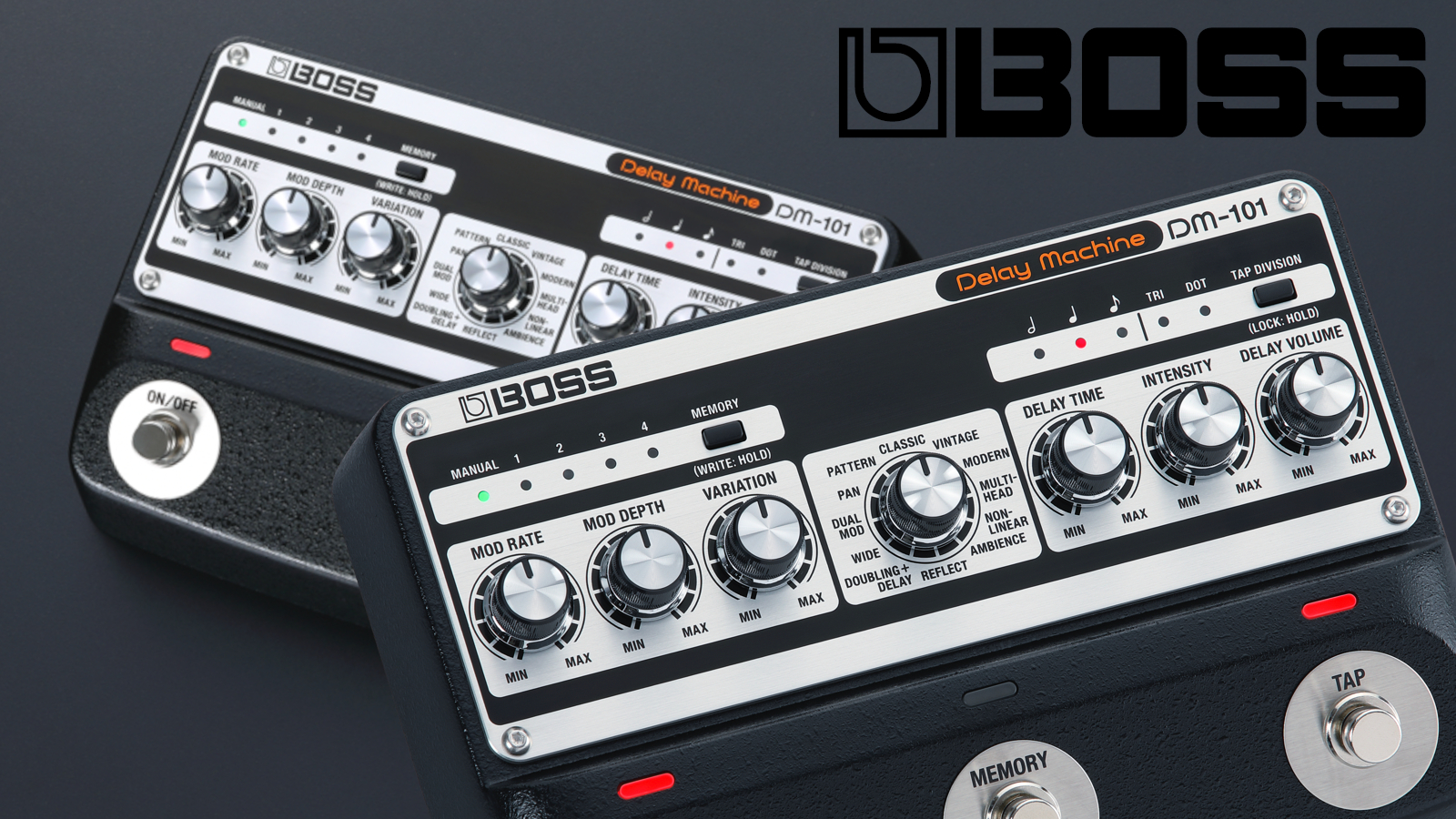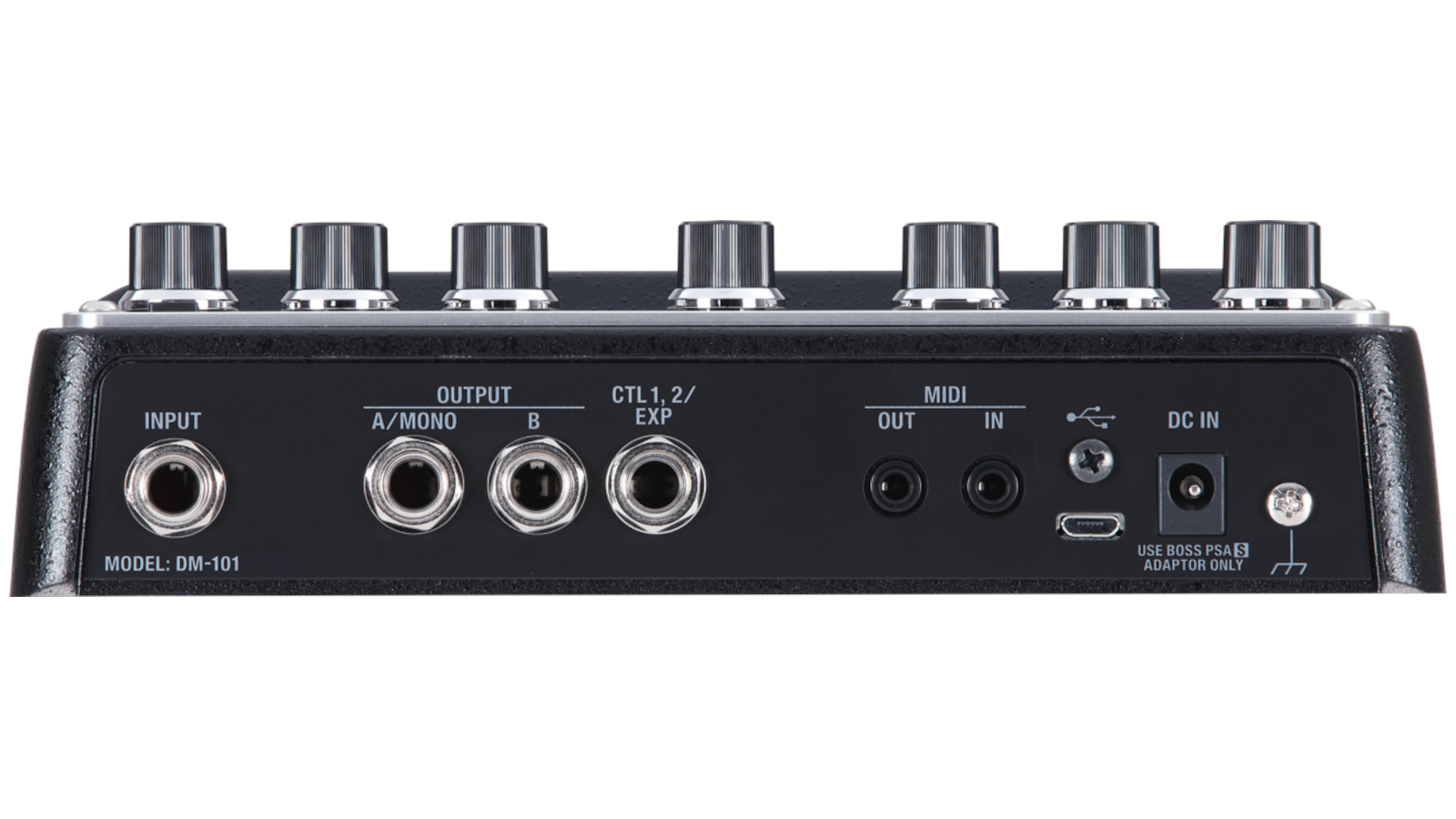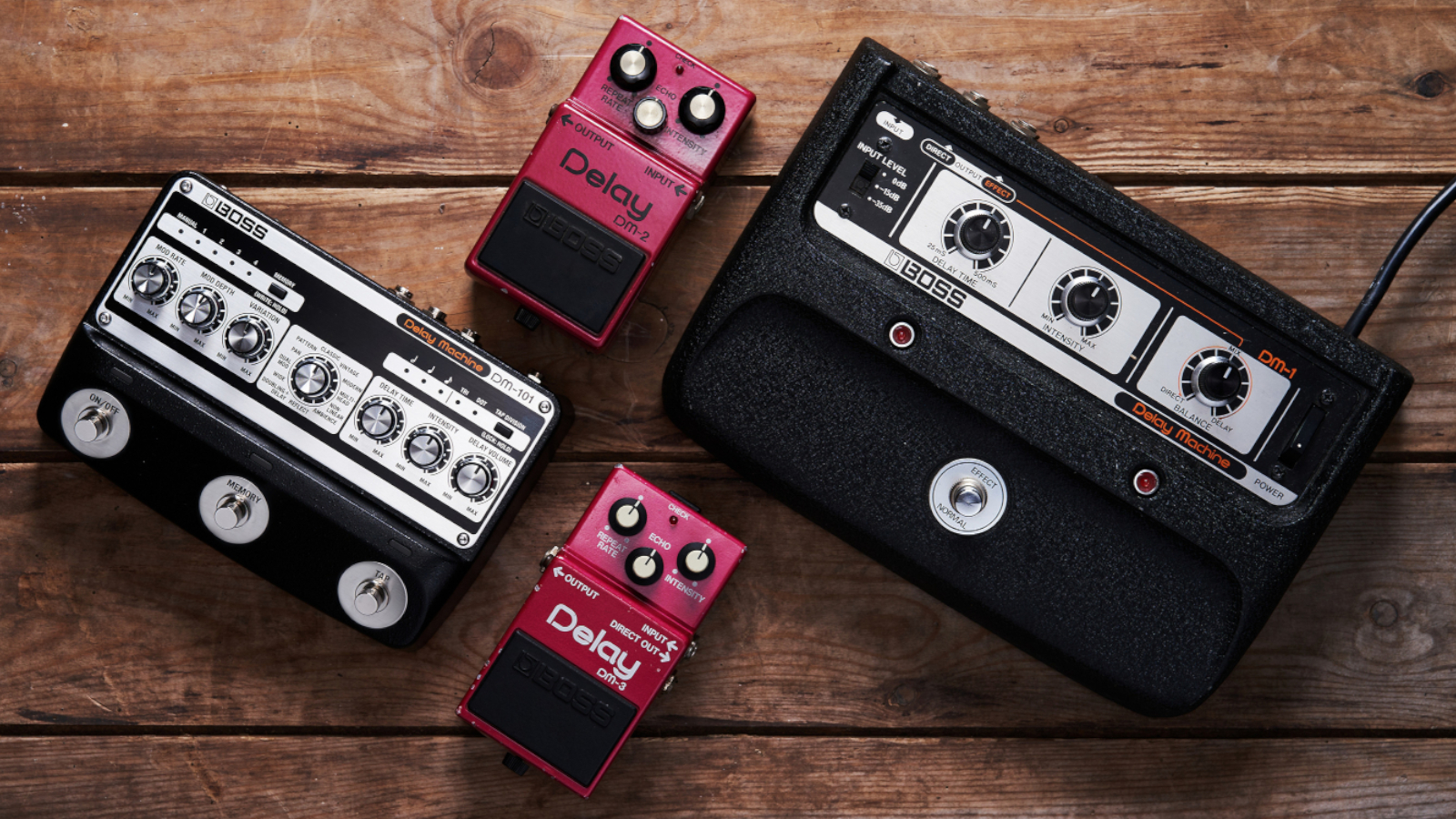If You Like Analog Delay You’ll Love the New Boss DM-101 Delay Machine
Featuring a CPU-controlled analog circuit boasting eight BBDs, this powerful stompbox is a smorgasbord of classic echo

Following up the release of the RE-202 Space Echo and SDE-3000D/SDE-3000EVH units, guitar effects pioneer Boss has unveiled their latest big-box delay, the DM-101 Delay Machine.
Billed as “the ultimate analog delay pedal” this smorgasbord of echo is packed with 12 distinctive modes that include complex stereo effects, old school delay sounds, rhythmic patterns, expansive modulation and more (see below for a detailed list).
In addition to the standard delay parameters of Delay Time, Intensity (feedback) and Delay Volume, the unit boasts modulation Rate and Depth controls along with a multi-function/mode-dependent Variation knob.
A trio of stomp switches allow bypass (effect tail optional), memory/preset selection, and tap tempo. Up to four presets can be chosen using the switch, although this is expandable up to 127 if using an external MIDI device. Nine tap division options comprise half-, quarter- and eighth-note selections (each with dotted and triplet choices).
Here’ a rundown of each of the DM-101 Delay Machine’s six mono modes…
- Classic Up to a whopping 1200ms of classic analog delay with tape-like wow and flutter-style modulation controlled by a generous range of waveforms
- Vintage Simulates the singular tone of the legendary Boss DM-2 Delay (now available as the DM-2w Delay in Boss’s Waza Craft series). Delay time settings range from 10-300ms and, as per the Classic setting, a variety of waveforms modulate the signal for a more complex sound
- Modern While the Classic and Vintage modes offer traditional warm analog delays, the Modern setting provides clear, sparkling repeats ranging from 40-840ms. As above, modulation can be controlled using the Variation knob
- Multi-Head Reminiscent of Space Echo effects, albeit with an idiosyncratic BBD flavor, this setting allows 10 selectable variations of multi-head tape-style delay
- Non-Linear Produces an interesting reverse-style effect via a series of short delays that increase in volume consecutively. Can be adjusted from 35-190ms using the Variation knob
- Ambience Great for some short reflections that mimic the sound of a smaller space


The remaining six modes exploit the DM-101 Delay Machine’s powerful stereo function. These include…
- Reflect Produces a reverb-like stereo sound (adjustable from 90-320ms) with a pre-delay parameter ranging from 40–290ms courtesy of the Variation knob
- Doubling+Delay This setting is like having two analog delays in your chain; one creates a doubling effect (10–20ms) while the other adds distinct repeats in a similar range to the DM-2 (10–310ms)
- Wide Whether used subtly with short delay times (min 25ms) or more overtly using longer delay times (max 590ms), this setting produces a rich, expanded stereo image. Great for mixing and dual amp setups
- Dual Mod Adjustable between 110-600ms, this unique setting is described as a “stereo delay with different modulation phase settings on the left and right outputs.” In this mode, the Variation knob adjusts the stereo output phase amount (up to fully inverted)
- Pan Ranging from 20-450ms, this tap delay outputs repeats with different timings at the stereo jacks (labeled “A/Mono” and “B”)
- Pattern Using the Variation knob, ten different stereo delays can be chosen, each with a unique rhythmic pattern

The latest guitar effects unit from Boss proves the Japanese brand is committed to moving the industry forward with exciting new products while leaning into their rich heritage of innovation.
All the latest guitar news, interviews, lessons, reviews, deals and more, direct to your inbox!
Taking inspiration from their first delay unit, the DM-1 Delay Machine launched in 1978, the DM-101 features a similar form factor and color scheme. However, unlike their latest offering that showcases eight bucket-brigade device (BBD) microchips, the DM-1 was based on charge-coupled device (CCD) technology.
Appearing in 1981, the DM-2 Delay employed a BBD circuit and became a bona fide vintage classic of Boss’s compact pedal range that debuted in 1977 with the SP-1 Spectrum, PH-1 Phaser and OD-1 Over Drive.
The DM-2 Delay was supplanted by the DM-3 in 1984 following the release of the groundbreaking DD-2 Digital Delay compact pedal (the world’s first digital delay in pedal form). While digital delay continues to inspire, many guitarists enjoy the classic tones of analog delay.
Marrying the time-honored sounds of BBD circuit design with the modern flexibility of CPU control, the Boss DM-101 Delay Machine makes the best of both the analog and digital worlds while setting a new benchmark in stompbox design.
Visit Boss for more information.
Rod Brakes is a music journalist with an expertise in guitars. Having spent many years at the coalface as a guitar dealer and tech, Rod's more recent work as a writer covering artists, industry pros and gear includes contributions for leading publications and websites such as Guitarist, Total Guitar, Guitar World, Guitar Player and MusicRadar in addition to specialist music books, blogs and social media. He is also a lifelong musician.


